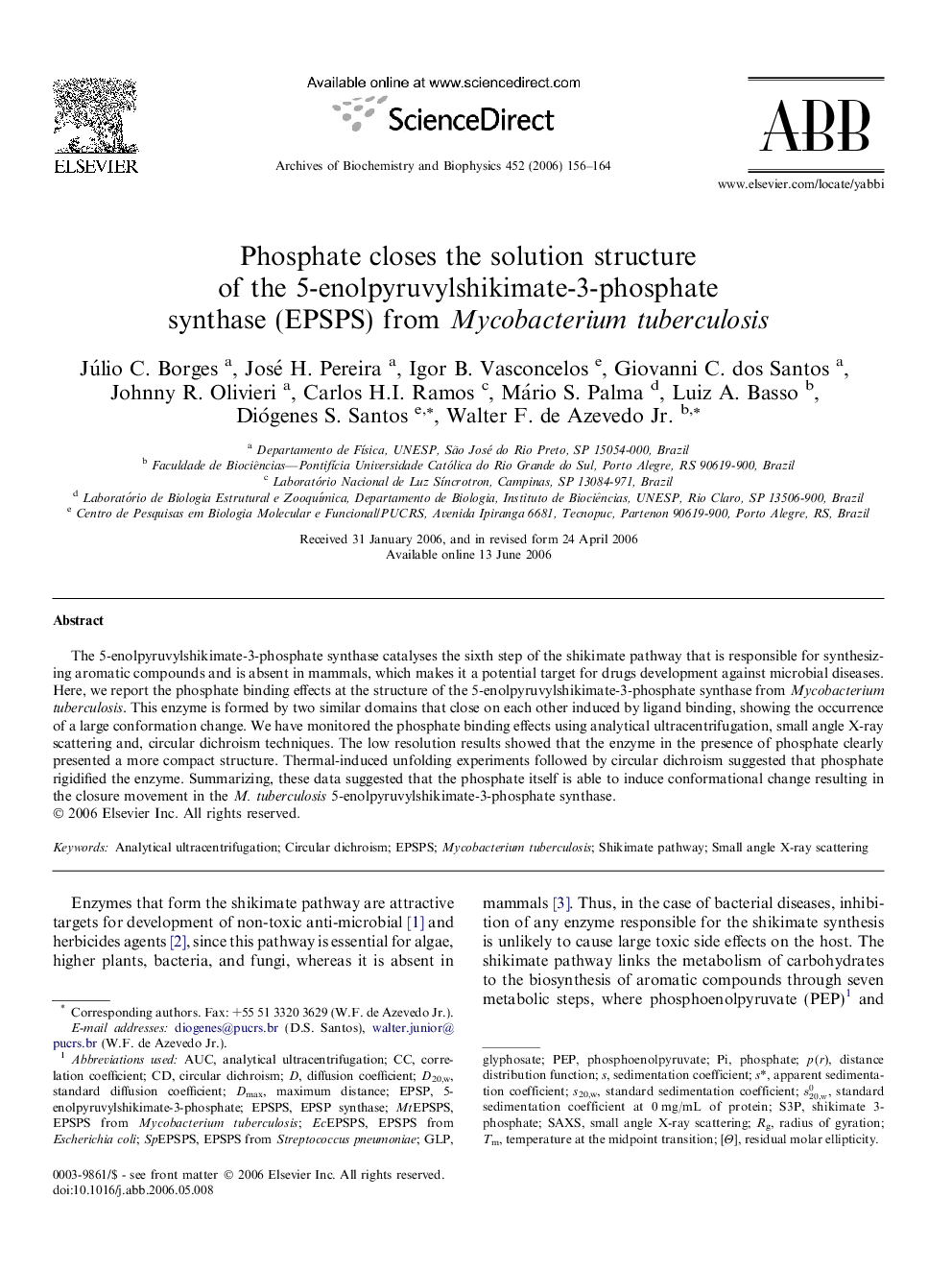| Article ID | Journal | Published Year | Pages | File Type |
|---|---|---|---|---|
| 1927307 | Archives of Biochemistry and Biophysics | 2006 | 9 Pages |
The 5-enolpyruvylshikimate-3-phosphate synthase catalyses the sixth step of the shikimate pathway that is responsible for synthesizing aromatic compounds and is absent in mammals, which makes it a potential target for drugs development against microbial diseases. Here, we report the phosphate binding effects at the structure of the 5-enolpyruvylshikimate-3-phosphate synthase from Mycobacterium tuberculosis. This enzyme is formed by two similar domains that close on each other induced by ligand binding, showing the occurrence of a large conformation change. We have monitored the phosphate binding effects using analytical ultracentrifugation, small angle X-ray scattering and, circular dichroism techniques. The low resolution results showed that the enzyme in the presence of phosphate clearly presented a more compact structure. Thermal-induced unfolding experiments followed by circular dichroism suggested that phosphate rigidified the enzyme. Summarizing, these data suggested that the phosphate itself is able to induce conformational change resulting in the closure movement in the M. tuberculosis 5-enolpyruvylshikimate-3-phosphate synthase.
